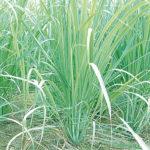The new study, which provides a database on the possible trigger agents of asthma in children, found other asthma triggers in the study population to include exposure to wood smoke and household sprays (insecticides).
In 2017, the researchers considered asthma triggers in 836-registered Nigerian primary school pupils from 39 randomly selected schools in Kano metropolis. Information was obtained on sex, social class, and suspected trigger factors from the pupils and their parents/caregivers using questionnaires. It was published in the journal, Tropical Journal of Medical Research.
Asthma is a chronic respiratory disease with rising incidence the world over even among children.
Asthma was diagnosed in 101 pupils, and some had more than one factor worsening their asthma. An overwhelming majority (92.1 per cent) of the pupils had identified an antecedent or concomitant common cold as the possible trigger in most of their attacks.
Furthermore, recent exposure to dust, wood smoke, or insecticides was identified in 85.1 per cent, 79.2 per cent, and 61.4 per cent, respectively.
None of the pupils identified the ingestion of any medication as a possible frequent trigger agent for their asthma.
The higher disease burden in the high socioeconomic class, according to study, they partly ascribed to the presumably lower rates of childhood infections, cleaner environments, better immunisation status, and indeed a tendency for prompt antimicrobial treatment in children from the more affluent families.
This class-related disease preponderance, they said is also consistent with the recently proposed hygiene hypothesis which explains the disease evolution.
ALSO READ: APC has no specific plans for youth development ―Sen Dino Melaye
In addition, the tendency for a sedentary indoor living, they said would also underscore the exposure risk in the children of such affluent families.
They suggested that the relevant control strategies along with the required avoidance recommendations of the common risk agents be pursued by the appropriate health policy-making bodies and managing physicians, respectively.
For maximum relevance to the vulnerable population, these control strategies, they said should be included as part of a comprehensive package of the school health programme.
They declared “the manipulation of the environment, such as the use of leather for furniture in place of upholstery, use of wood floors or linoleum in place of rugs, avoidance of furry toys, regular washing of the bed linens, cooking outside away from the main house building or the use of gas in place of firewood, and the use of insecticide-treated bed nets as against the use of insecticide sprays, will go a long way in reducing the acute asthmatic flares and its antecedent problems in children.”
Pro-Biafra group storms Anambra Assembly, wants enactment of Anti-grazing law
WATCH TOP VIDEOS FROM NIGERIAN TRIBUNE TV
- Let’s Talk About SELF-AWARENESS
- Is Your Confidence Mistaken for Pride? Let’s talk about it
- Is Etiquette About Perfection…Or Just Not Being Rude?
- Top Psychologist Reveal 3 Signs You’re Struggling With Imposter Syndrome
- Do You Pick Up Work-Related Calls at Midnight or Never? Let’s Talk About Boundaries






